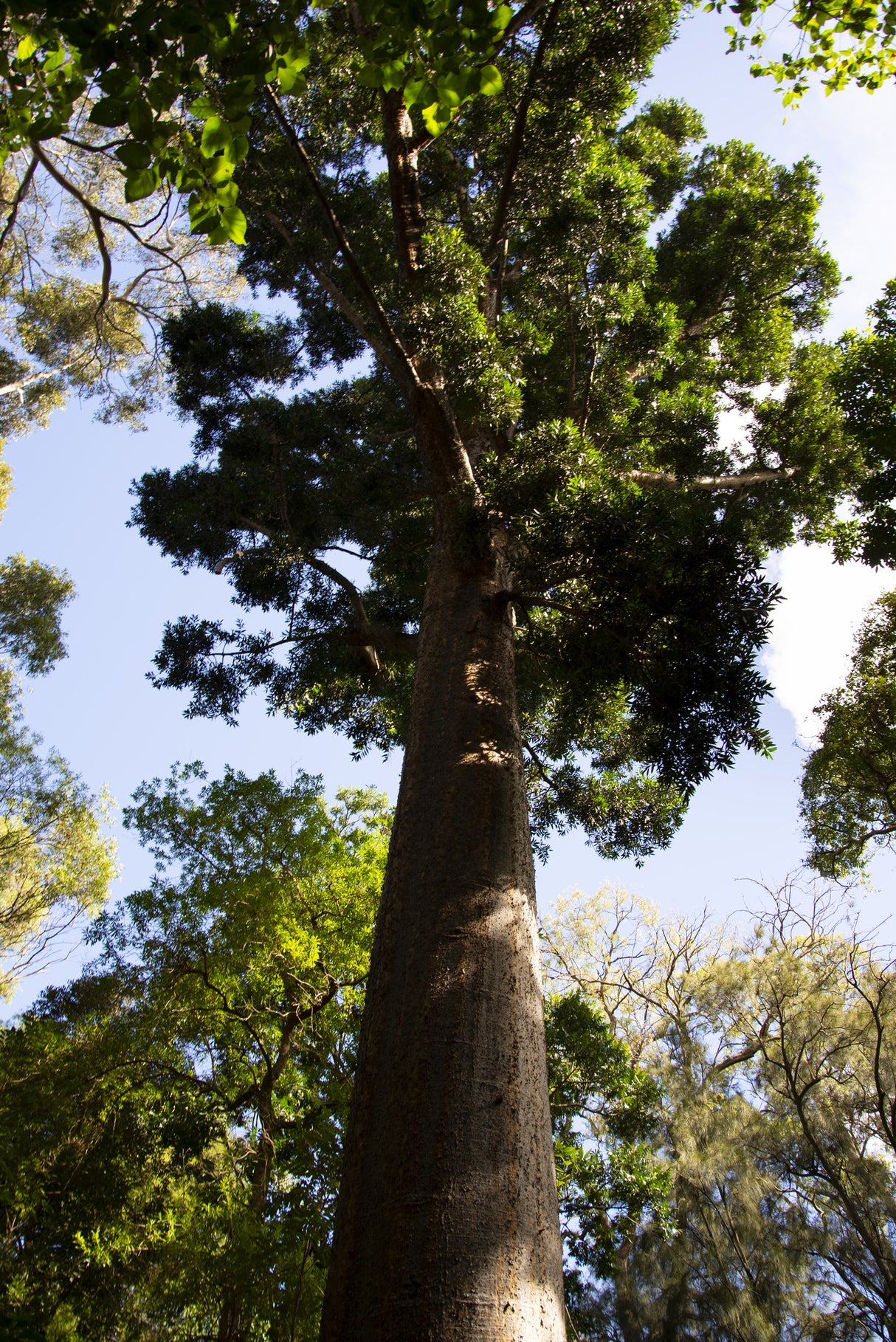Agathis Robusta
The Agathis robusta, or Queensland Kauri Pine, is a majestic evergreen conifer native to Australia, admired for its straight trunk, symmetrical form, and dense canopy. Growing up to 40 meters, this slow-growing tree is a standout choice for parks, large gardens, and heritage landscapes. Its smooth, grey bark and glossy green foliage add a touch of grandeur and structure to any setting.
Renowned for its adaptability and longevity, the Queensland Kauri Pine thrives in subtropical and tropical climates. Its impressive stature and minimal maintenance requirements make it ideal for large-scale projects and feature planting.
Specifications:
- Height: 30–40 meters
- Width: 6–10 meters
- Native to: Queensland, Australia
- Foliage: Glossy green, lance-shaped leaves forming a dense canopy
- Growth rate: Slow
Conditions:
- Soil: Prefers deep, well-drained soils; tolerates sandy or loamy types
- Light: Full sun
- Water: Moderate; tolerates occasional dry periods once established
- Climate: Thrives in tropical and subtropical regions
Additional Features:
- Root System: Non-invasive; suitable for large open spaces and near hardscaping
- Wind Resistance: Withstands strong winds, ideal for coastal and exposed locations
- Longevity: Extremely long-lived, providing enduring value over generations
- Uses: Perfect for shade trees, feature planting, or heritage landscaping
- Spacing: Plant 10–15 meters apart for avenues or standalone features
- Low Maintenance: Requires little pruning; retains a clean, tidy form naturally
- Environmental Benefits: Supports biodiversity and provides habitat for native wildlife
The Queensland Kauri Pine is a timeless choice for creating grand, lasting landscapes, ideal for architects and planners seeking a combination of elegance, scale, and sustainability.
The Benefits Of Buying An Advanced Tree
The Process Of Transplanting A Mature Tree
Identify the Tree's Root Zone
Identify the Tree's Root Zone
Before you begin, it's essential to identify the root zone or root ball of the tree. This is the area where the majority of the tree's feeder roots are located. It is typically estimated as 1 foot of root ball diameter for each inch of tree trunk diameter.
Prune the Roots
Prune the Roots
Root pruning should occur a few months before the actual move, ideally in the dormant season. This involves cutting a trench around the root zone to encourage the growth of new feeder roots, which will help the tree to establish itself in its new location.
Prepare the Tree
Prepare the Tree
Prior to digging, prune dead or excessive branches from the tree. This reduces the tree's overall mass, making it easier to handle, and decreases water loss post-transplant.
Dig Around the Root Ball
Dig Around the Root Ball
After determining the root ball's size, begin digging around it. Try to retain as much soil around the roots as possible. The depth should ideally get under the root system but be feasible for lifting.
Undercut the Root Ball
Undercut the Root Ball
Once you've dug around the periphery of the root ball, begin undercutting to sever the remaining roots beneath it.
Lift the Tree
Lift the Tree
With the root ball freed, carefully lift the tree out of the hole. For large trees, this will likely require machinery like a tree spade or crane. Always lift the tree by the root ball, not the trunk.
Prepare the Tree for Transport
Prepare the Tree for Transport
Once the tree is out of the ground, it's critical to protect the root ball to prevent damage. Wrap it in burlap and secure it with twine, wire or steel basket. This not only holds the root ball together but also helps retain moisture.
Water the Root Ball
Water the Root Ball
Prior to transportation, water the root ball thoroughly to ensure the roots stay moist.
Transporting the Tree
Transporting the Tree
Load the tree carefully onto a truck or trailer for transport. The tree should be securely positioned to avoid damage during transit. The tree should ideally be planted in its new location as soon as possible to minimize stress and increase its chance of survival.


